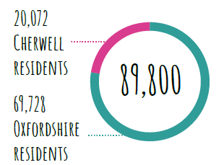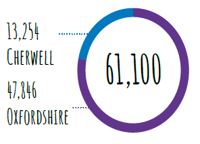Why including everyone is important
About this framework
This Framework is important for us in honouring and protecting the diverse strengths of individuals and in building inclusive communities; we go beyond what the law expects of us to achieve this.
The Equality Act (2010) states that public bodies, including Councils need to take extra steps to stop discrimination: this is known as the Public Sector Equality Duty. The Act defines discrimination as the less favourable treatment of a person, because of a protected characteristic, as compared to others who do not share that characteristic. The legislation also applies where there is a belief that the person who is disadvantaged has a particular protected characteristic, even if that is not the case.
The Public Sector Equality Duty means that we must consider equality as part of our daily business, in particular:
- We need to eliminate unlawful discrimination, harassment, victimisation and other conduct prohibited by the Act;
- We need to advance equality of opportunity between people who share a protected characteristic and those who do not;
- Foster good relations between people who share protected characteristics and those who do not;
- Set and publish equality objectives at least every four years and,
- Publish information, at least annually, to show how we comply with the Equality Duty including information about employees and to people who are affected by the public body’s policies and procedures.
Protected characteristics
There are nine protected characteristics:
- age;
- disability (including invisible disabilities);
- gender reassignment;
- marriage and civil partnership;
- pregnancy and maternity;
- race including ethnic or national origins, colour or nationality;
- religion or belief;
- sex;
- sexual orientation.
We go further than the protected characteristics in our decision-making process. To do this we consider the impact that our decisions have on people living with social deprivation, in rural communities, those leaving care, carers, and those in our armed forces community. For us inclusion applies to the ‘communities’ where we live and work, but also communities of shared understanding, such as faith, heritage and sexuality. We want to support every community to be the best it can and we work to remove or reduce obstacles which get in the way; this includes tackling unconscious bias which occurs when people favour others who look like them, share their values or experiences.
Not everyone is included
Data about the district tells us that the population we serve is relatively affluent; we also know that this level of data masks some stark inequalities within our communities which we find when we dig beneath the surface.
The diversity in our communities is a strength and does not result in disadvantage by itself, but we know we need to tackle inequalities because not everyone has the same life opportunities. The following illustrates examples of some of the inequalities in our communities:
Did you know?
People living with a long term illness or disability
In Oxfordshire (2011) there were 20,072 Cherwell residents, 69,728 Oxfordshire residents so 89,800 residents in total, living with a long-term illness or disability.

Unpaid carers
Of the 61,100 unpaid carers in Oxfordshire (2011), 13,254 were Cherwell residents and 47,846 were Oxfordshire residents.
Research shows carers are more likely to report symptoms of mental ill-health, and struggle financially.
Public Health England, information shows ethnic identity influences mental and physical health outcomes via multiple routes, such as experiences of discrimination and fear of negative incidents.
Ethnic groups risk of death from COVID-19

Black males and females are 1.9 times more likely to die and males of Bangladeshi and Pakistani ethnicity are 1.8 times more likely to die than those of white ethnic group.
Average pay for men in Oxfordshire

Men earn on average £6,800 more than women in the Oxfordshire area. Men in the Cherwell area earn on average £6,200 more.
Children living in poverty
In 2020, 10 per cent of children across the county live in low income families - that's almost 12,000 children living in poverty.
Life expectancy
Life expectancy between the most and least deprived wards in Oxfordshire is 13.7 years.
Learning difficulties
In 2019, there were 6,464 pupils with learning difficulties in Oxfordshire schools.

